a History of Value Creation
Throughout our history, the Nissui Group has harnessed nature's bounty
to create value and address societal challenges through food.
Today, we remain committed to enriching lives through better nutrition and health.
1911
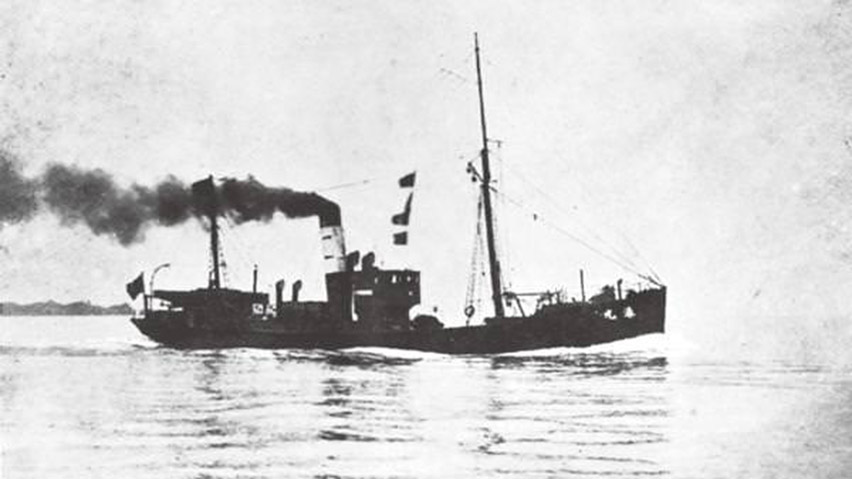
Pioneering industrial fisheries through trawl fishing innovation
Nissui's history began in 1911 when Ichiro Tamura established the Tamura Steamship Fishery Division and, together with Kosuke Kunishi, started trawl fishing operations based in Shimonoseki Port.
In 1919, the company became Kyodo Gyogyo Co., Ltd., expanding its business by developing and introducing new trawling technologies. In 1930, the company relocated its base to Tobata Port, where it established various functions essential to trawling, including ice making, cold storage, processing and sales, building a comprehensive supply chain for marine products.
- 1911
- Launched trawl fishing operations
- 1920
- Established the Hayatomo Fishery Research Institute, pioneering private sector fisheries research in Japan
- 1921
- Installed the first wireless telegraph system on a private fishing vessel in Japan
- 1927
- Implemented diesel engine technology
- 1930
- Hayatomo Fishery Research Institute developed and implemented rapid freezing equipment for vessels
1921
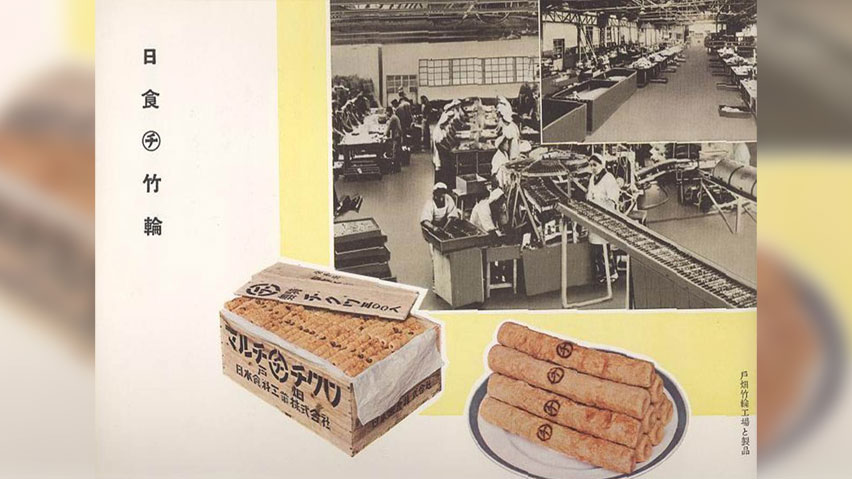
Achieving complete utilization and effective use of marine products
Our commitment to innovation led us beyond traditional fish sales into value creation.
We saw an opportunity to transform fish species that were difficult to sell fresh into new products, revolutionizing chikuwa(fish cake) production from a cottage industry into a modern enterprise. This vision led to the establishment of Nippon Chikuwa Seizosho in 1921, marking our full-scale entry into fish cake manufacturing.
Innovation continued as we developed fish meal production using the non-edible portions from fish cake processing. This breakthrough achieved our goal of complete resource utilization, enabling us to offer a diverse range of processed marine products.
- 1921
- Established Nippon Chikuwa Seizosho
- 1922
- Introduced American-made Meakin fish meal manufacturing machine and began fish meal production
1950
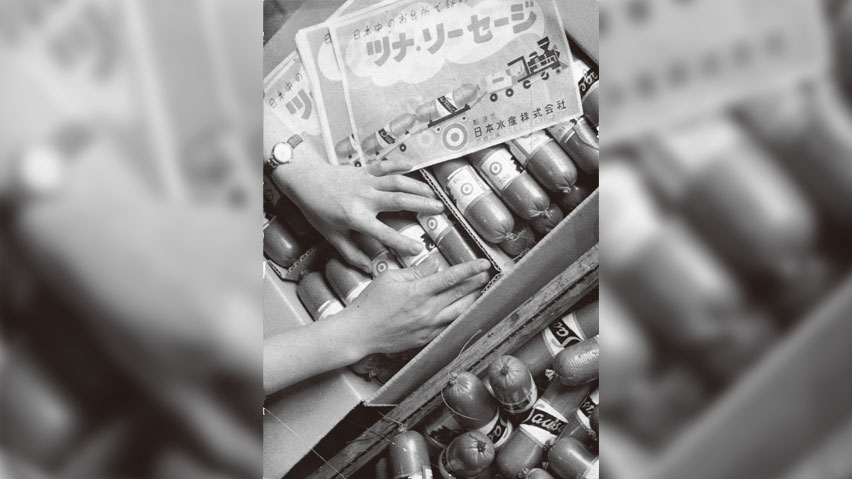
Launched development and distribution of processed foods
The 1950s marked our expansion beyond fishing operations into land-based businesses, with full-scale entry into processed foods including fish sausages and frozen foods.
Our frozen foods journey began in 1959 with the launch of our first product - chawanmushi (savory egg custard). The 1960s saw the introduction of beloved products like "Chibikko Korokke" (mini croquettes), "Kani Creamy Korokke" (creamy crab croquettes), "White Fish", "Kani Shumai" (crab dumplings), and "Ika Tempura" (squid tempura).
In the late 1980s, as the household frozen foods market began to grow, we led the industry with groundbreaking products: frozen noodles with soup ("Champon") and frozen rice ("Yaki Onigiri"). These innovations created new consumer demand and contributed to market expansion. In the 2000s, we continued to innovate with products that could thaw naturally at room temperature, responding to changing lifestyles and household structures with convenient, delicious frozen foods. This drive for innovation fueled the continued expansion of our processed foods business.
- 1946
- Resumed production of "Yaki-Chikuwa" after World War II
- 1952
- Launched full-scale sales of "Tuna Sausage" (fish sausages)
- 1959
- Began production of first household frozen food product, "chawanmushi"
- 1968
- Launched nationwide sales of "Yaki-Chikuwa"
- 1987
- Began sales of household frozen food "Cook For Me Champon"
- 1989
- Began sales of household frozen food "Cook For Me Yaki Onigiri"
- 1999
- Launched "Obento ni Benri" ("convenient for boxed meals") series of naturally-thawing frozen foods
- 2002
- Released fish sausages and fish cake without egg white
1960
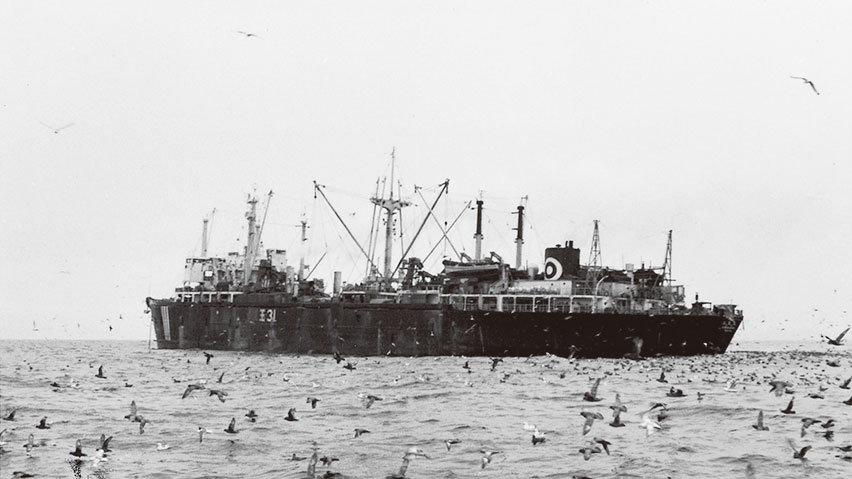
Pioneering Frozen Surimi Technology and Creating New Products
Nissui developed frozen surimi as a way to fully utilize abundant Alaska pollock resources - a first in the industry.
Working with the Hokkaido Fisheries Research Institute, we succeeded in developing frozen surimi production technology in 1960. In 1964, we installed processing equipment aboard our trawlers for immediate at-sea processing. Full-scale production began in 1967, followed by the launch of specialized trawlers with advanced equipment for mass production.
The frozen surimi became essential for our fish sausages and "Yaki-Chikuwa", which could be enjoyed uncooked and was sold nationwide. Through at-sea frozen surimi production and new product development, we transformed Alaska pollock from an underutilized resource into a source of new value.
- 1959
- Began joint research on Alaska pollock surimi with Hokkaido Fisheries Research Institute
- 1960
- Developed quality-preserving frozen surimi technology
- 1960
- Initiated research on at-sea frozen surimi production
- 1967
- Began full-scale at-sea frozen surimi production on the Gyokuei Maru
- 1967
- Started using Alaska pollock frozen surimi in fish sausages
- 1968
- Launched nationwide sales of ready-to-eat "Yaki-Chikuwa"
1965
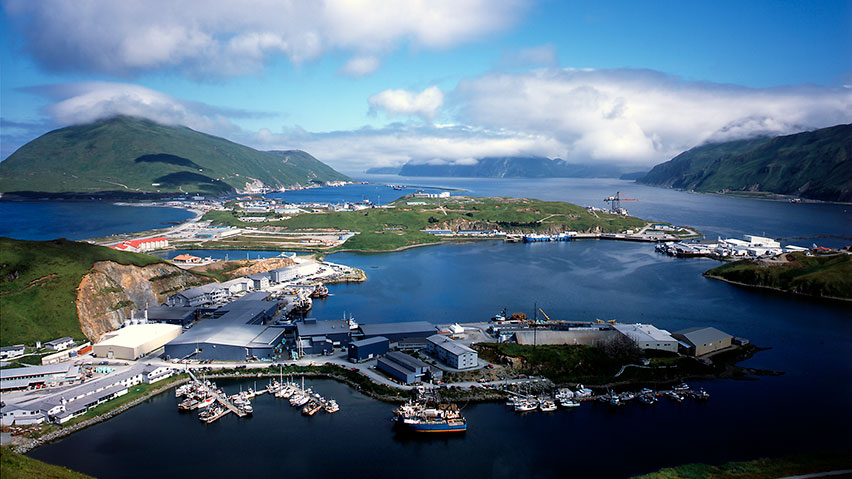
Strengthening Access to Resources
In the post-World War II era, as coastal nations began asserting sovereignty over their waters, Japan's deep-sea fishing grounds gradually diminished. The establishment of 200-nautical-mile zones by the United States and Soviet Union in 1977 significantly impacted Nissui's fishing operations.
Anticipating these changes, Nissui strengthened its marine product procurement capabilities as an alternative to fishing operations, expanding purchasing both domestically and internationally while establishing overseas operational bases for procurement and fishing. Some of these overseas bases continue to play crucial roles today in securing access to global marine resources.
- 1965
- Initiated marine products procurement in North America
- 1974
- Established Nippon Suisan U.S.A., Inc. in Seattle, Washington
- 1975
- Established processing facility in Dutch Harbor, Alaska (now UniSea, Inc.)
- 1978
- Founded EMDEPES as a joint fishing venture in Chile
- 1985
- Established Greatland Seafoods in Alaska for Alaska pollock surimi production
- 1988
- Established Salmones Antártica S.A. as a salmon farming company in Chile
- 1988
- Established Nissui Europe B.V. in Amsterdam
- 1990
- Established Nissui América Latina S.A. (N.A.L.) in Chile
- 1990
- Completed UniSea's Plant No. 2 (surimi plant) and began production
1978
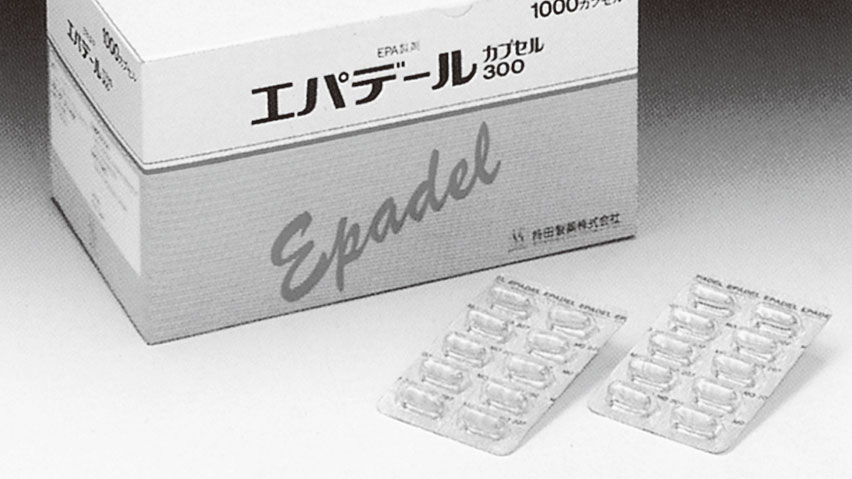
Pioneering High-Purity EPA: From Research to Pharmaceutical Applications
Nissui began researching eicosapentaenoic acid (EPA) in 1978, conducting epidemiological studies with Chiba University in 1980 to understand its health benefits. In 1981, we launched joint development efforts with pharmaceutical companies. Our breakthrough came when EPA was approved in Japan for treating arteriosclerosis obliterans in 1990 and hyperlipidemia in 1994. As the first company worldwide to develop advanced purification technology for high purity EPA, we achieved mass production capabilities and established our role as a supplier of pharmaceutical raw materials. The potential of EPA continues to expand, as demonstrated by its 2019 U.S. approval for treating cardiovascular diseases.
- 1978
- Initiated EPA research
- 1980
- Started joint research with Chiba University and succeeded in high purity EPA development
- 1981
- Began joint pharmaceutical development research
- 1990
- Received approval for arteriosclerosis obliterans treatment
- 1994
- Received approval for hyperlipidemia treatment
1988
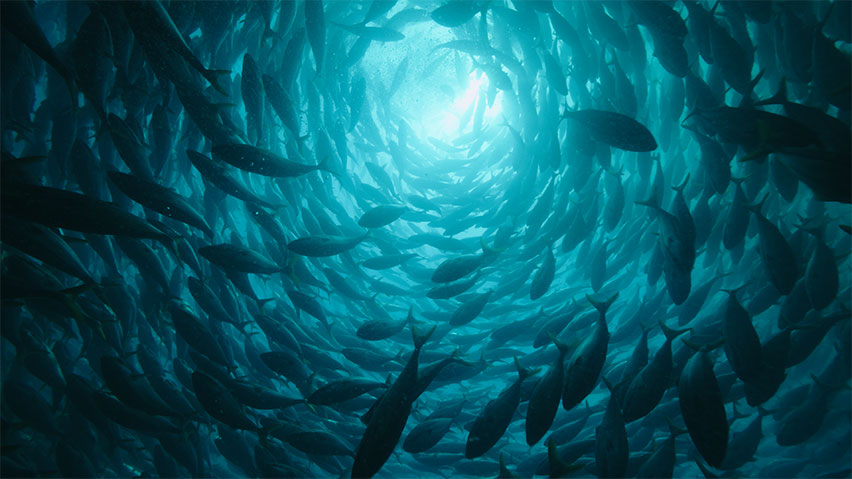
Breaking New Ground in Aquaculture
In the late 1980s, we identified aquaculture as a key alternative to traditional fishing for securing marine resources.
We began salmon aquaculture at Salmones Antártica S.A. in Chile in 1988, eventually developing an integrated operation encompassing selective breeding, spawning, cultivation, processing, and feed production. In 1993, we established the Oita Marine Biological Technology Center specializing in aquaculture research and development, which now supports the Group's domestic aquaculture companies.
Kurose Suisan, established in 2004 to farm Kurose Buri (Japanese amberjack), achieved a milestone in 2022 when all shipped products came from artificial seeds - a first in Japan for full-life cycle aquaculture. This artificial seeding reduces impact on natural resources. At Seinan Suisan and Kaneko Sangyo, which joined the Nissui Group in 2006 and 2012 respectively, we conduct pacific bluefin tuna farming, recently focusing on short-cycle cultivation that grows approximately 100kg tuna in about six months.
Our commitment to aquaculture innovation continues, as demonstrated by our 2023 launch of land-based whiteleg shrimp farming operations.
- 1988
- Established Salmones Antártica S.A.
- 1993
- Established the Oita Marine Biological Technology Center for aquaculture R&D
- 2017
- First worldwide to obtain ASC certification for Japanese amberjack
- 2022
- Farmed Kurose buri (Japanese amberjack) achieves a 100% rate of artificial seeds in production volume
- 2023
- Launched land-based whiteleg shrimp aquaculture operations
2000
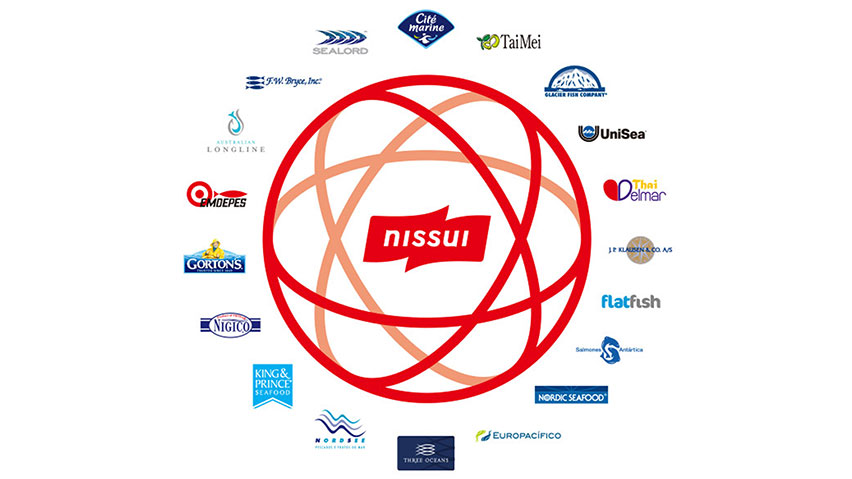
Creating High Value-added Products Through Global Marine Products Supply Chains
From the 2000s onward, as we transitioned to Group-based management, we built global supply chains for marine products, expanding our reach to markets worldwide.
Companies that shared our mission joined forces, each leveraging their unique strengths. This collaboration formed Global Links - connecting global marine resources with dinner tables worldwide - and Local Links - uniting diverse functions within each region.
Within the Nissui Group's supply chain - from resources to consumers - each company contributes its unique strengths. Through this global collaboration, we create and deliver high value-added products.
- 2001
- Invested in New Zealand's Sealord Group
- 2001
- Acquired Gorton's, Inc. producer of household frozen marine foods in North America
- 2005
- Acquired King & Prince Seafood Corporation, manufacturer of food service frozen marine foods in the U.S.
- 2007
- Entered European processed foods business by acquiring Cité Marine S.A.S., producer of fried marine products and chilled foods in France
- 2023
- Established the "Nissui Global Links" symbol
